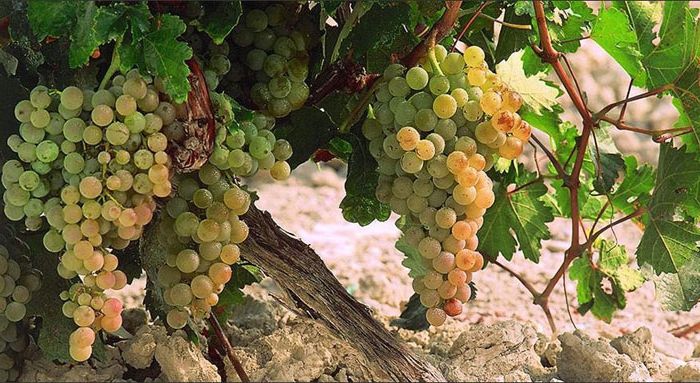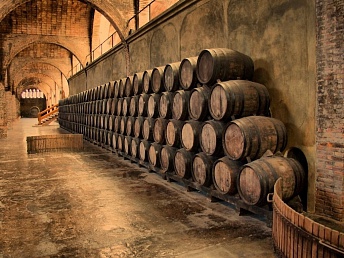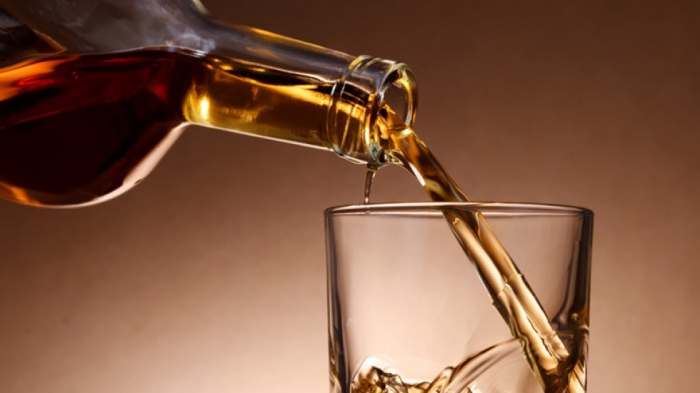Cognac refers to strong alcoholic beverages, which are obtained through the use of white wine, double distilled and aged in oak barrels. It is oak barrels that are an indispensable and necessary condition for the successful maturation of this drink. Brandy production can be safely called art.
A bit of history
To date, even the most ardent admirers of this alcoholic drink can not clearly explain what kind of brandy should taste. So, it can be quite diverse and depends on the area and country. For example, the well-known French brand Napoleon does not always smell pleasant.
This is due to the presence of some features in cognac spirits, which are caused by differences in the starting material.
Also, aroma and taste can change during the distillation process and during the first years of aging. During this period, a peculiar extraction of tannins extracted from wood occurs to a greater extent.
We must not forget about the release of lipids, amino acids, oils and volatile acids. At this time, cognac acquires a golden color, and the woody-vanilla aroma is filled.
The longer the exposure, the cognac will become darker in color and softer. Many different shades will appear in its taste and aroma, among which there are notes of fruits, flowers and spices.
Stage 1: vintage
Only some grape varieties are used for brandy production: Fol Blanche, Uni Blanc, Colombard and Saint-Emilion.

The vine is planted at mandatory intervals of at least three meters. This is to maximize access to the sun. Harvested only once a year in early October. In modern business conditions, the owners use special machines to harvest grapes. However, some of them still prefer the grandfather (manual) method.
The cognac production technology provides for the pressing of harvested grapes in horizontal flat presses, which only slightly crush the berries and do not squeeze them dry. The juice thus obtained is immediately sent to fermentation.
Stage 2: fermentation
The direct production of cognac begins precisely with fermentation, which takes place at small enterprises in special barrels, and at large enterprises in tanks. Add sugar at this stage is prohibited. The fermentation process is controlled quite strictly, since the quality of the future alcohol depends on it. Juice is fermented for a month.
The result is a dry young wine with 8% alcohol. It is stored on yeast sludge, due to which the acidity is significantly reduced, and the wine acquires a soft and sophisticated taste. However, cognac production technology involves sending it to distillation, as the resulting wine is quite dry and contains a lot of acid and little alcohol.
Stage 3: distillation
The quality of the finished product substantially depends on the distillation (distillation), which is carried out only the next year after the collection of a new crop until early April. Distillation takes place in two stages using a special distillation apparatus, known as the “Charente” distillation cube. This equipment is made of copper, due to its resistance to tartaric acid.
So, as already mentioned above, cognac production involves the implementation of a distillation process, which takes place in two stages.Upon completion of the first, crude alcohol is obtained, the strength of which is in the range of 27-32%. Of the nine liters of wine, only a liter of brandy alcohol is obtained, which is a cloudy and colorless drink.
The second stage of distillation is to send the crude alcohol for another distillation in order to obtain a basic high-quality cognac alcohol. This process requires special attention and skill; alcohol is distilled gently for 12 hours. As a result of this process, a solution with a strength of up to 72% is obtained, which is sent for aging, which completes the production of cognac.
Stage 4: exposure

This is the most important stage, which provides for the cognac production process. Exposure is the decisive factor in achieving a high quality drink. This process lasts more than 30 months, its duration can even be up to 50 years.
These containers should not have any metal parts that may come into contact with alcohols. Under the influence of oak barrels, this alcoholic drink acquires a characteristic specific taste.
During this period, the product is saturated with oxygen, penetrating through the pores of the tree, which helps to improve the taste of cognac. The exposure and price of brandy are directly dependent. So, the longer the exposure, the more expensive this drink.
Making cognac at home
Cognac is a drink that conveys the spirit of France. The subtle technology of its manufacture cannot simply be repeated at home. However, you can create a similar drink. At the same time, it was not the factories for the production of alcoholic beverages that engaged in the manufacture of such a drink, but the craftsmen. The production of cognac at home provides for the use of moonshine as the basic basis. Moreover, the result exceeds all expectations in terms of taste.
 The production of cognac at home from moonshine is carried out in various ways, which have both simple and complex technology.
The production of cognac at home from moonshine is carried out in various ways, which have both simple and complex technology.
Of course, he should not undergo such endurance, as in a factory in oak barrels. It is also not based on grape spirit. However, the result is an alcoholic drink that is very close to real cognac.
It is especially possible to get an excellent result if you invest a soul in it during manufacture. Often, guests during a feast cannot be distinguished either by smell or taste by home-made cognac from an alcoholic drink made at the factory.
The classic recipe for homemade cognac
As already mentioned above, the basis of this drink is moonshine of good quality. It depends on it the taste and smell of the future alcoholic beverage. The following ingredients are required:
- potassium permanganate crystals;
- walnut partitions (one handful);
- natural black loose tea (teaspoon);
- cloves (six buds);
- caraway seeds (tablespoon);
- vanilla sugar (tablespoon);
- lemon acid.
Production of cognac at home begins with the cultivation of potassium permanganate in a clean and transparent moonshine in a glass container. Thanks to this simple procedure, a precipitate is formed from fusel oils.
Next, walnut partitions, tea leaves and cloves are placed in the resulting mixture. Having mixed the mixture well, you need to pour cumin, vanilla sugar and citric acid here.
Keep this glass container with the future alcoholic beverage in a dark place for at least five days without significant temperature drops and drafts.
After the specified period, the resulting drink is poured through the filter into bottles. Everything - homemade cognac is ready.
Sometimes the technological scheme for the production of cognac is somewhat different. Oak bark and bay leaves are poured into the finished moonshine. Insisted also at least five days.
Quick brandy preparation
However, there is a faster way to make cognac.So, in a enameled pan you need to pour a liter of moonshine, which has a strength of 50%. The pan must be put on fire and the following ingredients added: sweet peas, allspice, a small bay leaf, half a teaspoon of black tea, soda on the tip of the knife, two tablespoons of sugar and a little vanilla.

Bring the contents in a closed pan to 77 degrees, then remove it from the heat and leave for some time (five minutes). Pour the drink into the can, close it and wait until it cools completely. The resulting homemade cognac is filtered, its strength is increased to 40 degrees, the drink is bottled.
Five days later, the resulting drink can be consumed. To improve the taste of cognac, you can add a third of a teaspoon of good coffee and a couple of potassium permanganate crystals with other components to establish fusel oils.
A good brandy is obtained if it is prepared on grape juice and insisted for at least a month on oak bark. However, there are other recipes using the latter component, which will be discussed later.
Cognac on oak bark
Brandy production in Russia quite successfully uses oak bark. To do this, you need to take three tablespoons of sugar for three liters of moonshine, two tablespoons of oak bark and two tablespoons of black leaf tea. You can also add St. John's wort and chopped rose hips.
You must remember to add black pepper (5-6 peas), a third of a teaspoon of cinnamon and vanilla. The can is closed and placed in a dark place. Thus, homemade cognac is infused for three days. Next, the resulting drink is well filtered and bottled.
Cognac made on milk
For this, moonshine (3 liters) is also taken, poured into a glass dish of a slightly larger size, a glass of milk is added, which, when combined with the alcohol composition, is curtailed. At the same time, coffee is being prepared (50 g is dissolved in slightly warm water).
A coffee drink is poured into the overall mixture. The following mixes are added: ground nutmeg, cloves (4-6 pcs.), Peppercorns, vanilla on the tip of a knife and half a glass of sugar. Mix the resulting mixture thoroughly and insist for at least 20 days. At the same time, it is necessary to shake the future homemade cognac periodically during the first five days. At the end of three weeks, the resulting alcoholic beverage is filtered and bottled.






